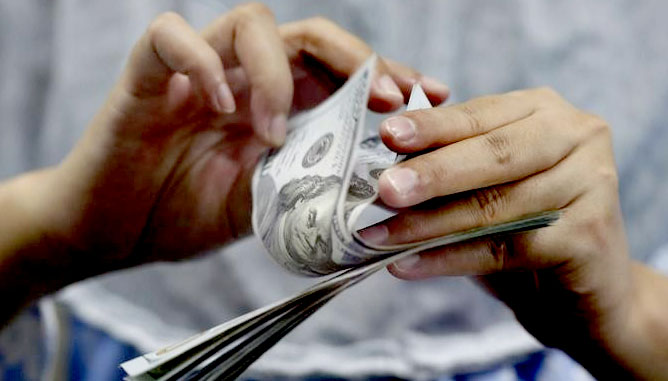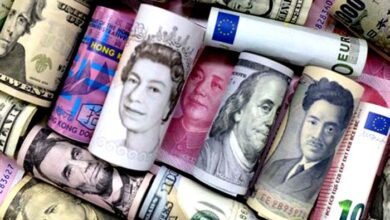Dollar Bounces Back as Last Week’s Selling Frenzy Subsides; Chinese Yuan Under Pressure Due to Weak GDP

The U.S. dollar has regained stability in the early hours of the European market on Monday after enduring its most significant weekly decline this year. Meanwhile, the Chinese yuan has been impacted by disappointing growth data, putting it under further strain.
At 03:05 ET (07:05 GMT), the Dollar Index, which measures the greenback against a basket of six other currencies, experienced a marginal decrease, trading at 99.597. This comes after a 2.2% drop last week, marking its most substantial one-week fall since November.
Dollar Finds Its Footing After Recent Decline
Last week, the dollar index dipped below the 100 level for the first time since April 2022. This drop was prompted by weaker-than-expected inflation figures, including consumer prices on Wednesday and producer prices on Thursday. These reports reinforced the belief that the Federal Reserve will conclude its cycle of interest rate hikes after a final increase next week.
According to analysts at ING, “Dollar long positions are rapidly disappearing, with PPI numbers all but confirming the narrative of disinflation in the U.S. While it’s challenging to find a compelling counterargument against the bearish momentum of the dollar, it’s worth noting that the downward trend appears overstretched. Keep an eye out for potential temporary corrections.”
Later in the session, we can expect the NY Empire State Manufacturing Index, followed by U.S. retail sales, initial jobless claims, and reports on building permits, housing starts, and existing home sales throughout the week. Nevertheless, these figures are unlikely to alter the narrative that the Fed’s 25-basis-point hike later this month will likely be the last for the year.
Chinese Growth Slows in the Second Quarter
Following the release of data on Monday, USD/CNY rose by 0.5% to 7.1744, as China’s second-quarter gross domestic product (GDP) grew by 0.8% from the previous quarter. This represents a significant slowdown compared to the 2.2% growth seen in the preceding quarter.
On an annualized basis, GDP expanded by 6.3% in the second quarter. Although this figure is lower than the expected 7.3% growth, it can be attributed to the lower base for comparison from the COVID-affected period last year. Traders are now closely observing the Chinese government’s response, waiting to see if it will implement further stimulus measures to boost economic growth.
Euro Remains Highly Sought After
EUR/USD experienced a 0.1% increase, reaching 1.1238. The euro continues to gain favor after surging 2.4% last week to reach a 16-month high.
It is widely anticipated that the European Central Bank will raise interest rates once again next week. In June, inflation levels in Germany, the largest economy in the eurozone, rose to 6.8% year-on-year when harmonized for comparison with other European Union countries. This exceeds the ECB’s medium-term target by over three times, indicating a potential need for further rate hikes as the year progresses.
According to ING, “It’s challenging to make a strong case against the bearish USD narrative at this point. While some correction is possible following a significant and potentially overextended move, the near-term outlook for EUR/USD may remain broadly bullish.”
In other currency pairings, GBP/USD experienced a slight decline to 1.3081, trading just below last week’s 15-month high. Additionally, USD/JPY fell by 0.2% to 138.47, as the yen benefited from declining U.S. bond yields ahead of the Bank of Japan’s upcoming policy meeting next week.
As for AUD/USD, it fell by 0.4% to 0.6809, with the Australian dollar following the yuan’s downward trend due to the historical trade connections between the two countries.





